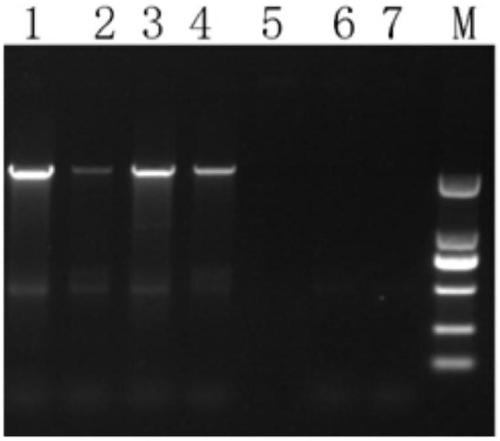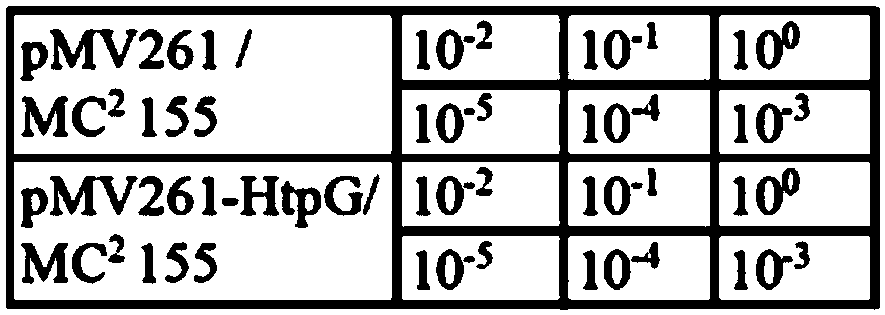Method for constructing high temperature stress-resistant recombinant Mycobacterium smegmatis
A kind of technology of Mycobacterium smegmatis and construction method, applied in the field of construction of recombinant Mycobacterium smegmatis
- Summary
- Abstract
- Description
- Claims
- Application Information
AI Technical Summary
Problems solved by technology
Method used
Image
Examples
Embodiment 1
[0023] Example 1: Expression of HtpG protein using mycobacterium-Escherichia coli shuttle plasmid pMV261
[0024] (1) Construction of HtpG expression plasmid
[0025] With the genomic DNA of mycobacterium tuberculosis Mycobacterium tuberculo sisH37Rv as template, carry out PCR by forward primer (shown in SEQ ID No. 2 in the sequence listing) and reverse primer (shown in SEQ ID No. 3 in the sequence listing) Amplify to obtain the HtpG gene fragment, connect the HtpG gene fragment to the pMV261 vector (New use of BCG for recombinant vaccines, Nature, 1991.351(6326): 456-60; public available from Foshan Institute of Science and Technology), and the HtpG expression plasmid pMV261-HtpG was obtained.
[0026] (2) HtpG expression plasmid introduced into Mycobacterium smegmatis
[0027] 1) Mycobacterium smegmatis MC 2 155 is a mutant strain derived from Mycobacterium smegmatis ATCC 607, which has high transformation efficiency and is the most common strain of Mycobacterium smegmati...
Embodiment 2
[0031] Example 2: Detecting the impact of HtpG protein on the viability of Mycobacterium smegmatis under high temperature stress conditions
[0032] (1) Recombinant Mycobacterium smegmatis pMV261-HtpG / MC 2 155 and control bacteria pMV261 / MC 2 155 LB solid medium containing antibiotic kan 30 μg / mL were respectively streaked, cultured at 37°C for 3 days, and 3 different single colonies were picked for each strain and inoculated with antibiotic kan 30 μg / mL, 0.5% glycerol and 0.05% spit Warm LB liquid medium at 80°C and culture with shaking at 37°C.
[0033] (2) The above-mentioned 6 single colonies grow to the logarithmic growth phase (OD600 is about 0.5), and carry out gradient dilution (10- 1 to 10- 5 ), the specific dilution layout is shown in Table 1 below.
[0034] Table 1 Dilution Layout
[0035]
[0036] (3) For each dilution, pipette 5 μl of bacterial liquid into LB solid medium containing antibiotic kan 30 μg / mL, and blow dry until there is no liquid on the surf...
PUM
 Login to View More
Login to View More Abstract
Description
Claims
Application Information
 Login to View More
Login to View More - R&D
- Intellectual Property
- Life Sciences
- Materials
- Tech Scout
- Unparalleled Data Quality
- Higher Quality Content
- 60% Fewer Hallucinations
Browse by: Latest US Patents, China's latest patents, Technical Efficacy Thesaurus, Application Domain, Technology Topic, Popular Technical Reports.
© 2025 PatSnap. All rights reserved.Legal|Privacy policy|Modern Slavery Act Transparency Statement|Sitemap|About US| Contact US: help@patsnap.com



